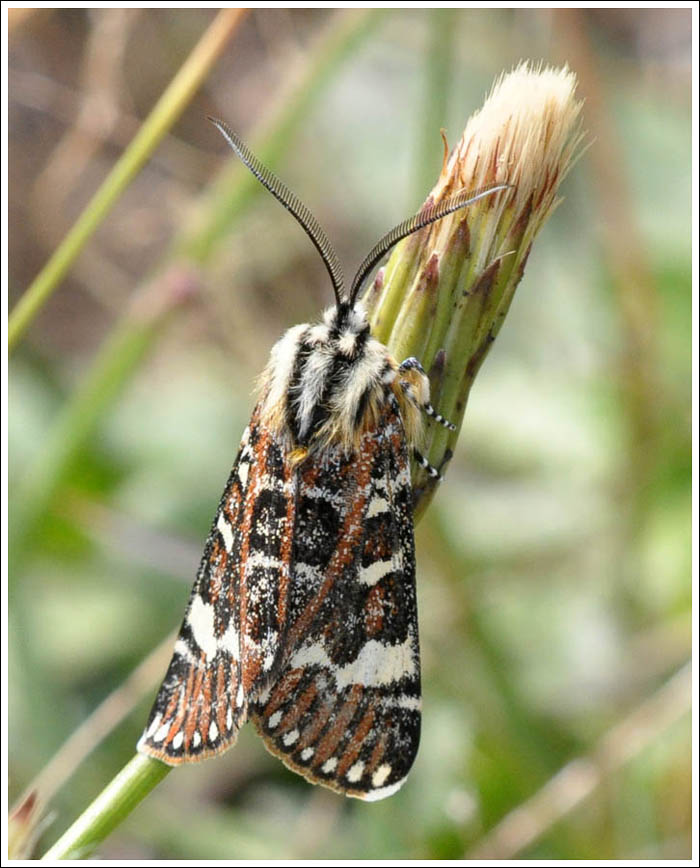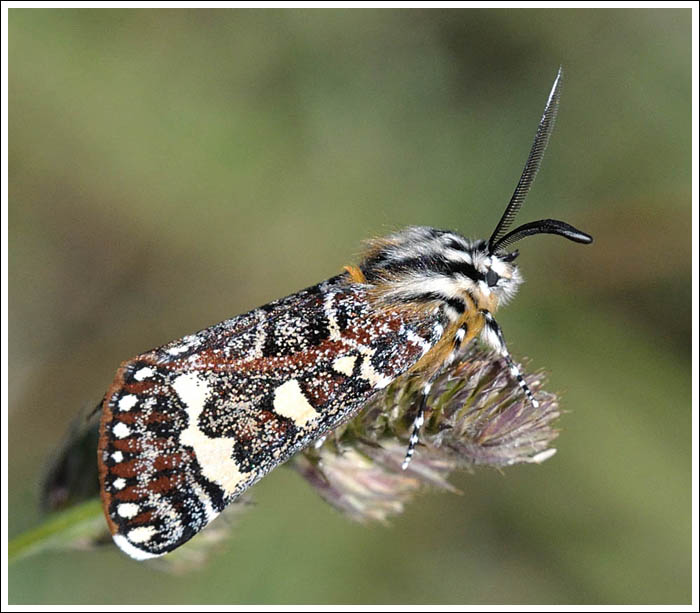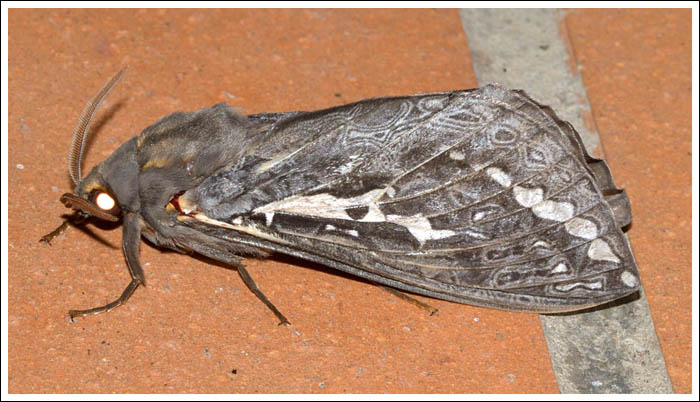Apina callisto, (Agaristinae) is a little unusual in that is a day flying Noctuid moth, and based on recent experience it doesn’t appear to come to the moth light at night. After the welcome rain, grass and weed growth has been prolific, and at the moment these moths are in numbers with males in pursuit of females. Their flight is swift and erratic and hard to follow, they are very wary, and hard to approach on the odd occasion when they land. Two sessions in the paddock with the 200 mm macro lens resulted in just three keepers, two males briefly perched on grass seedheads, and a mating pair tucked away in some capeweed which is one of the larval food plants. The larvae tunnel into the ground where they pupate.

Mating pair, female on the right with simple antennae.
Horizontal shots will enlarge with a click.



